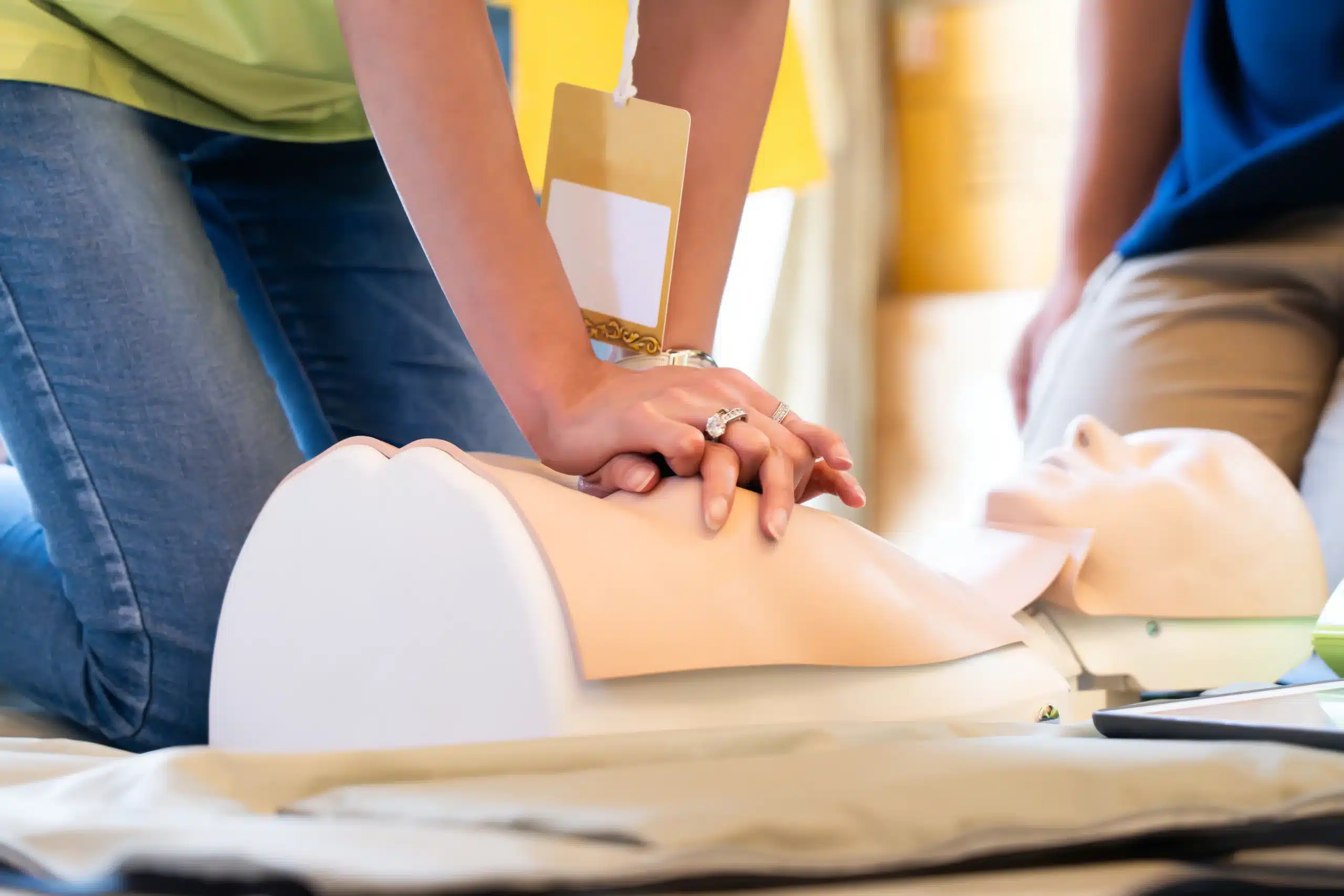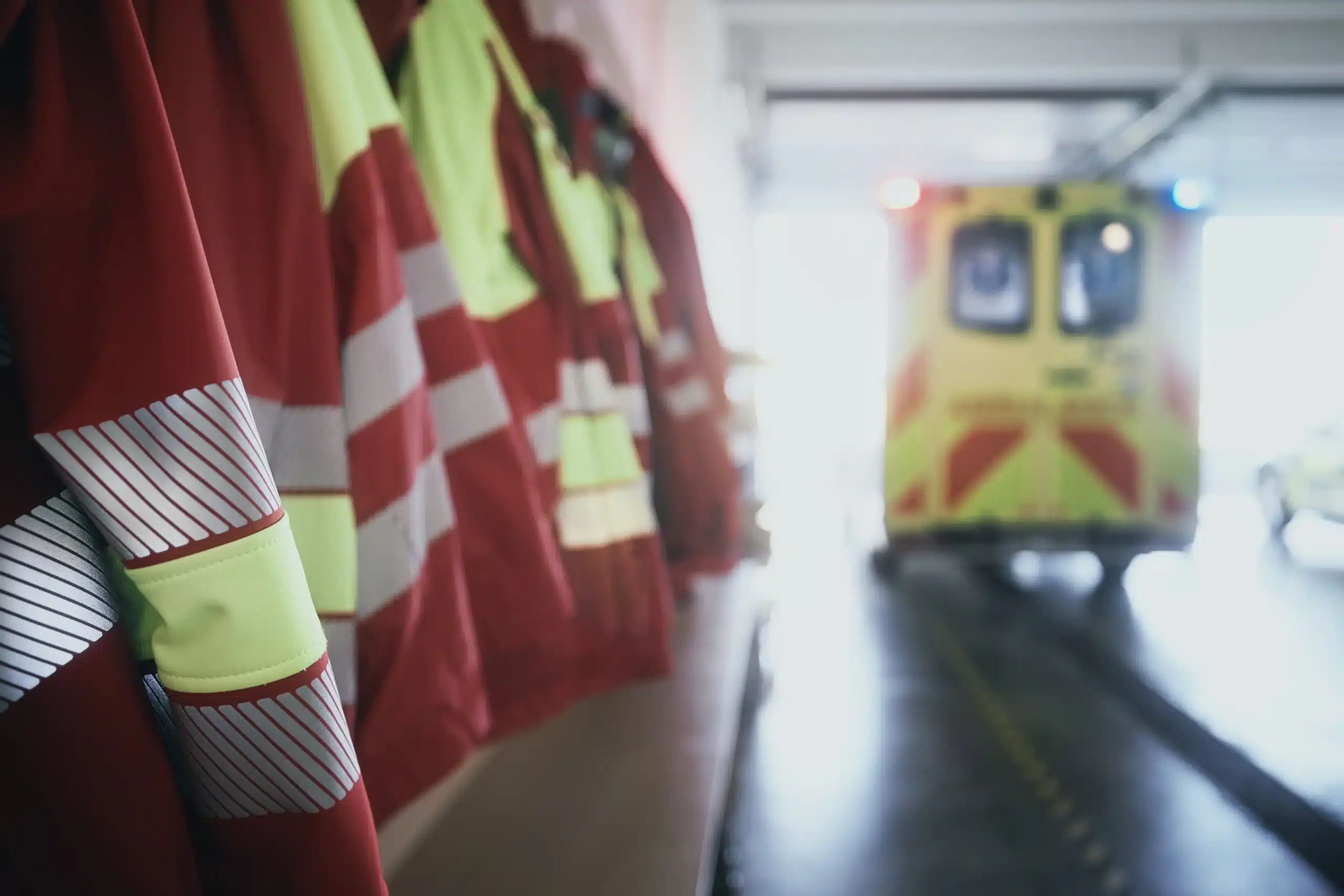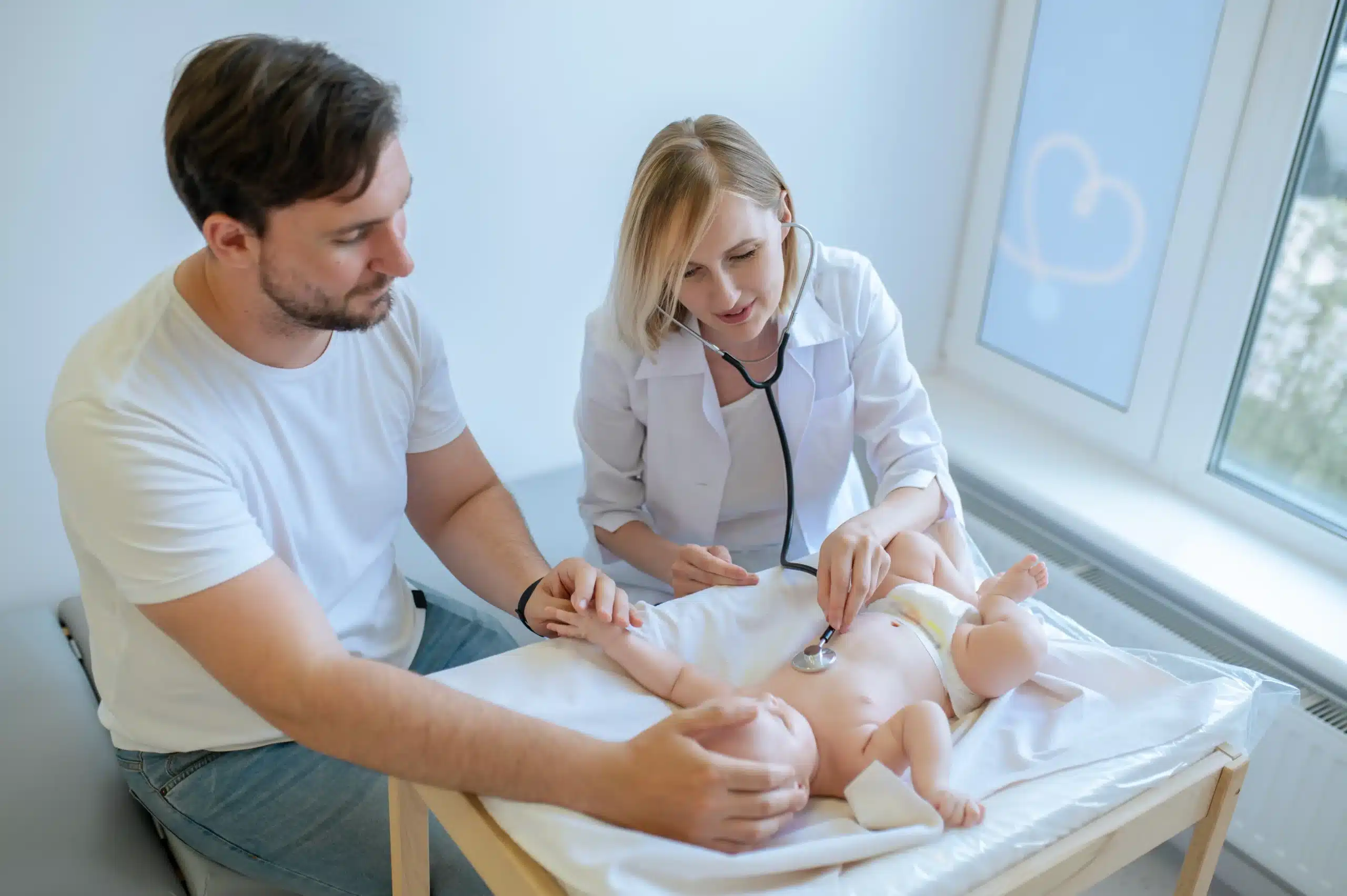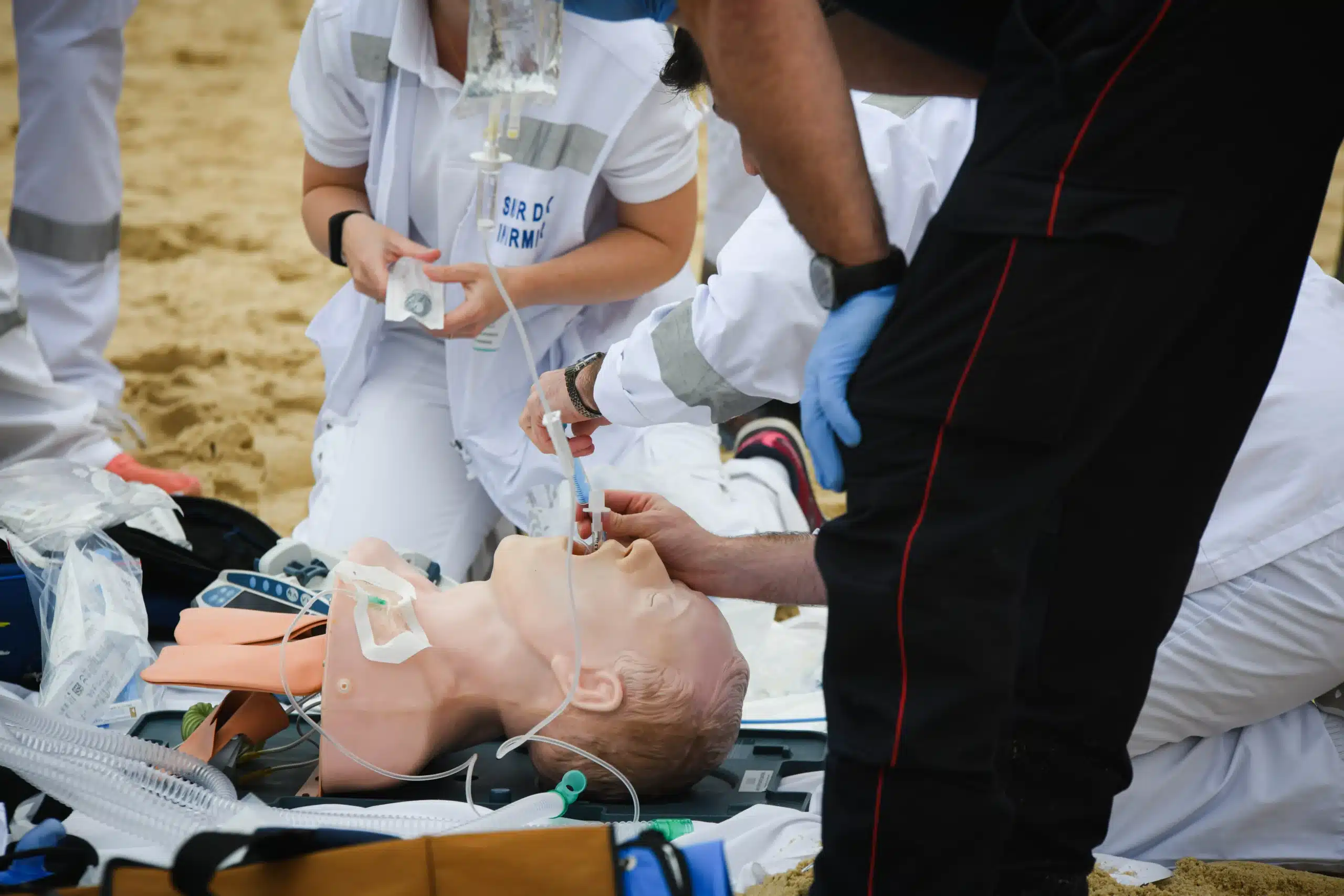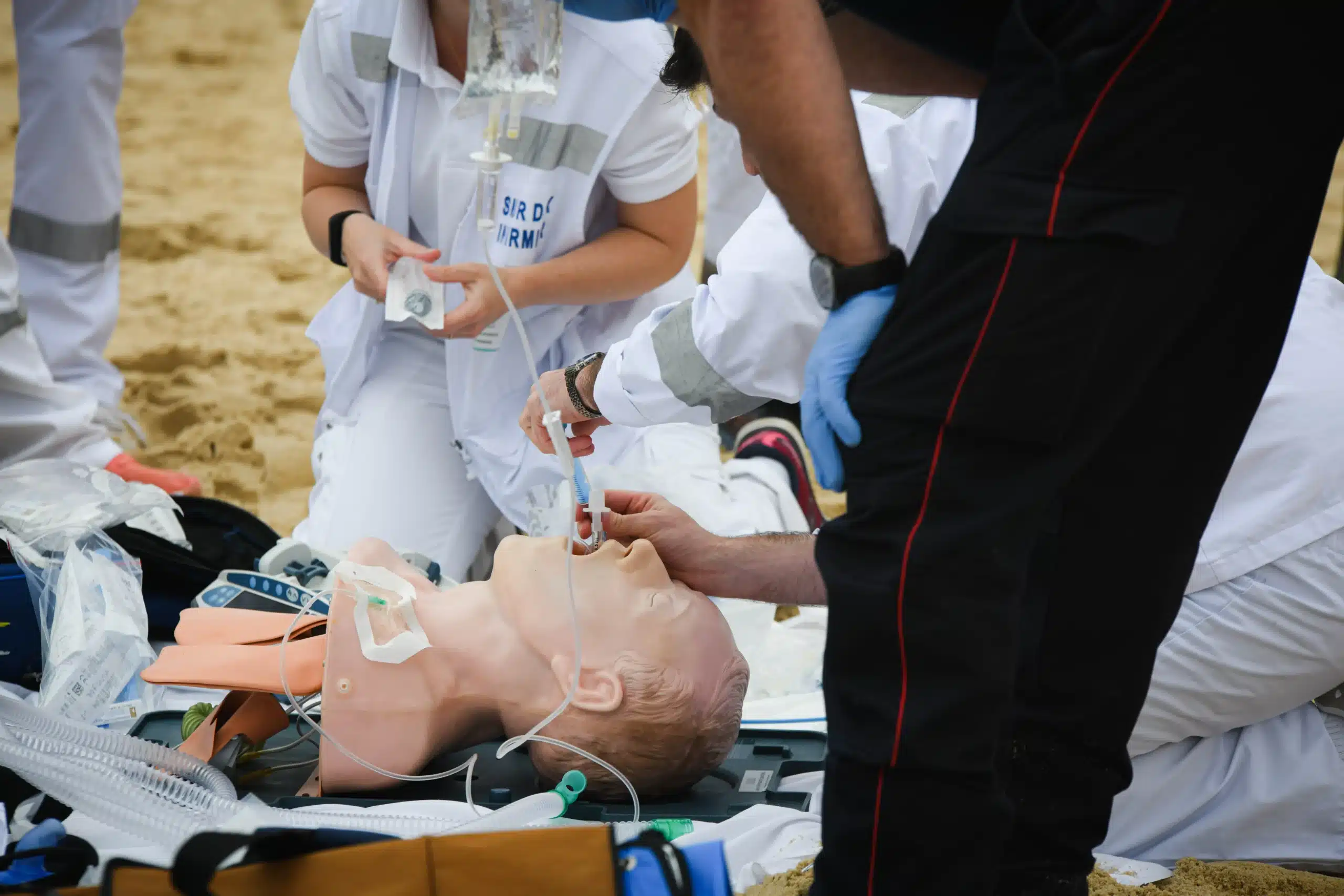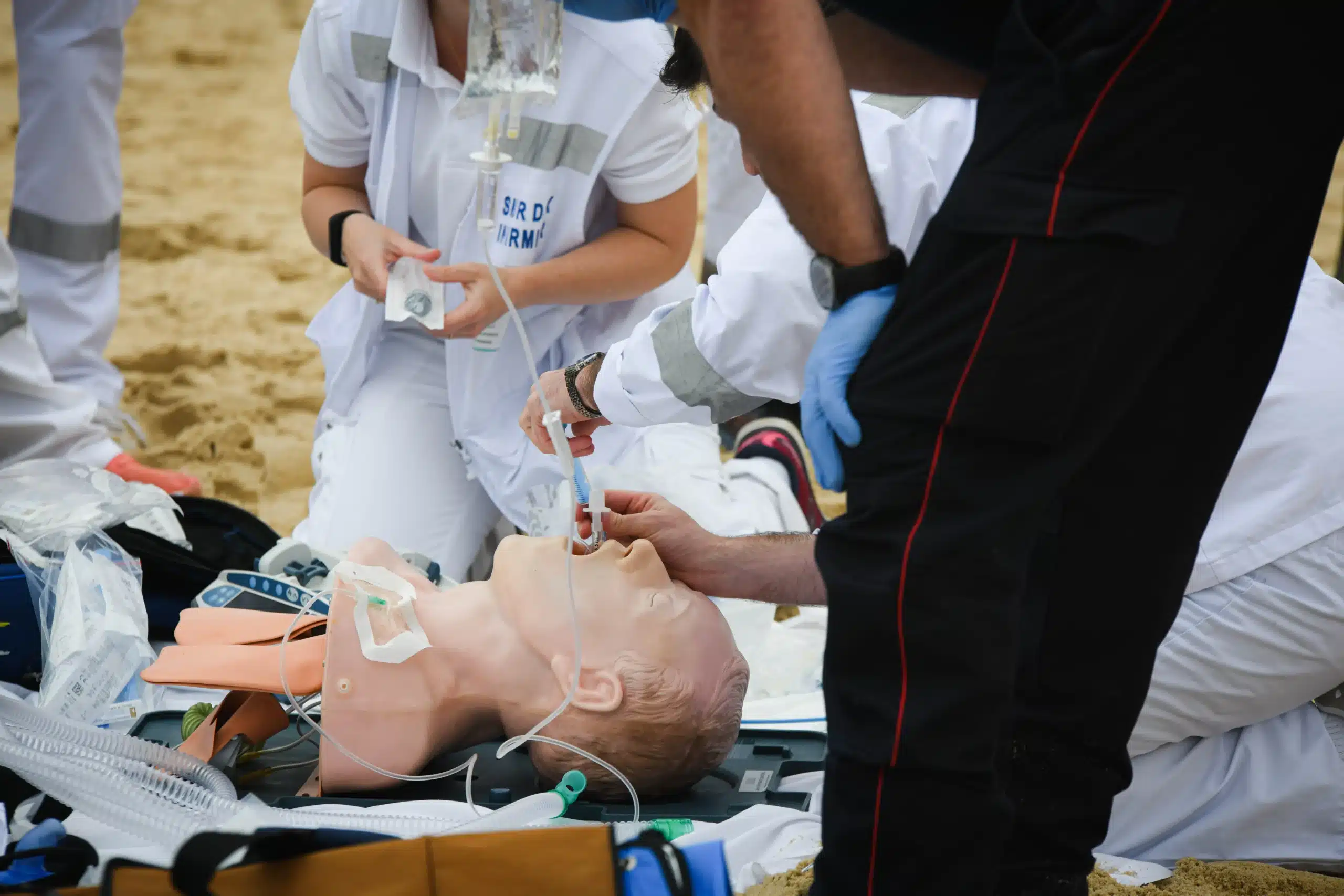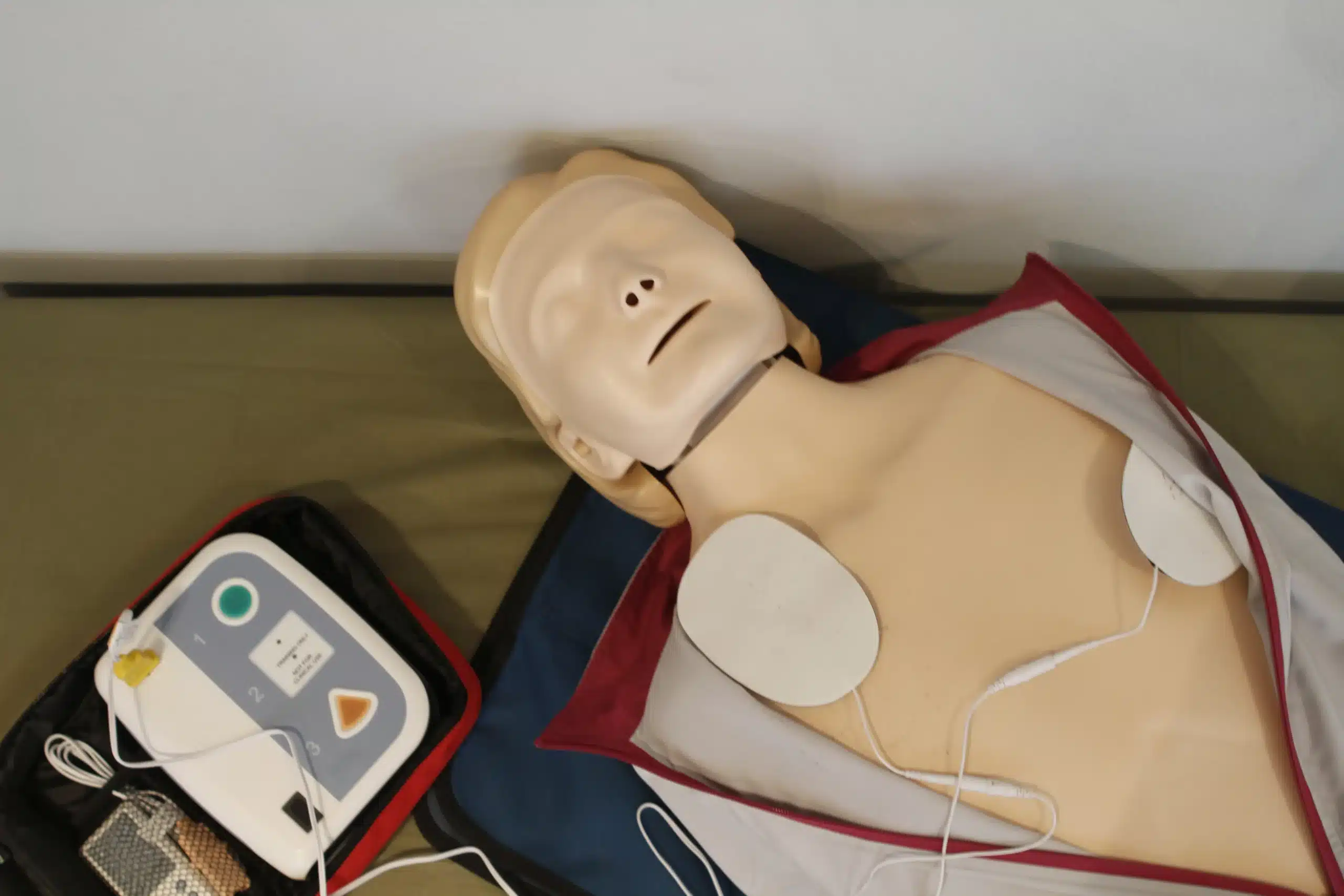Emergencies happen, and knowing how to respond can make all the difference. CPR is a life-saving skill that empowers you to act quickly and confidently in critical situations. If you’re looking for CPR courses in Dublin, this guide is for you. We’ll explore the different types of CPR training available, from basic CPR and First Aid to advanced certifications like BLS and ACLS. We’ll also discuss the importance of choosing an accredited provider and highlight reputable training centers in the Dublin area. Plus, we’ll delve into the benefits of CPR certification, both personally and professionally. Let’s equip you with the knowledge and skills to make a real difference.
Key Takeaways
- CPR training empowers you to save lives: Equipping yourself with CPR skills allows you to confidently respond to medical emergencies and make a real difference. Explore various CPR courses to find one that suits your needs.
- Choosing the right course matters: Consider factors such as the course type (BLS, ACLS, PALS), learning style (in-person, online, or blended), and the training provider’s credentials (AHA certification) when making your decision. Pleasanton CPR Classes offers a range of options.
- CPR certification is a valuable investment: The cost of training is outweighed by the invaluable ability to assist in medical emergencies. Certification also strengthens your resume and contributes to community safety.
What is CPR?
What is CPR and Why is it Important?
CPR (Cardiopulmonary Resuscitation) is a life-saving technique used in emergencies when someone’s breathing or heartbeat has stopped. It involves chest compressions and, sometimes, rescue breaths. These actions maintain blood flow to the brain and other vital organs until professional medical help arrives. Learning CPR empowers you to respond effectively in critical situations and potentially save a life. Think of it as a vital skill, much like knowing how to change a tire—it’s something everyone should know. For more information, check out these CPR classes and certification resources.
Types of CPR Courses
Several types of CPR courses cater to different needs and experience levels. The American Heart Association offers Heartsaver courses designed for the general public, including CPR and First Aid training. For healthcare providers, there’s Basic Life Support (BLS certification), which covers more advanced techniques. Pediatric First Aid training with CPR/AED certification is also available for those working with children. Safety Training Seminars offers a range of these AHA-certified courses in Dublin, CA, with flexible scheduling options.
Common CPR Training Misconceptions
Many people hesitate to learn CPR due to common misconceptions. One myth is that CPR requires extensive medical training. In reality, the core techniques are straightforward to learn. Another misconception is that only medical professionals can perform CPR effectively. Quality CPR training programs equip anyone with the skills and confidence to perform CPR safely and effectively. Concerns about performing CPR incorrectly or injuring someone are also common. However, training addresses these concerns and provides guidance. Don’t let these myths prevent you from gaining this invaluable skill.
Find a CPR Course Provider in Dublin
When searching for CPR courses in Dublin, you’ll find several reputable training providers. Each offers various classes tailored to different needs, from basic CPR and first aid to advanced life support training. Here are a few options to explore:
Pleasanton CPR Classes
While Pleasanton CPR Classes is based in Pleasanton, they serve the surrounding areas, including Dublin and San Ramon. They are an American Heart Association (AHA) Training Center offering a range of AHA certifications, including BLS, ACLS, and PALS. Check their website for their course schedule and offerings. They also offer group discounts, a great option for workplaces or community groups. For those seeking a low-price guarantee, Pleasanton CPR classes offer a price match. Learn more about their low price guarantee.
American Heart Association Courses
The AHA itself doesn’t directly offer courses but authorizes training centers like Pleasanton CPR Classes to do so. If you’re looking for up-to-date training materials and adherence to the latest AHA guidelines, finding an AHA-authorized training center is key. Many hospitals and healthcare organizations also offer AHA courses. You can often find information on AHA courses through local healthcare providers. Pleasanton CPR Classes offers the convenient RQI program for healthcare professionals seeking BLS, ACLS, and PALS certifications. Learn more about their RQI classes.
Irish Heart Foundation
The Irish Heart Foundation is a leading resource for CPR training in Ireland. They offer various courses, including the Heartsaver CPR AED course, designed for the general public. This course uses a practical, video-based format, making it easy to learn essential CPR techniques. Visit the Irish Heart Foundation website to find a course near you and learn about their programs.
Other Reputable Providers
Beyond these options, several other organizations provide CPR training in Dublin. For example, Berrick Emergency Response Training offers first aid and basic life support training for various industries and the general public. A quick online search can help you uncover additional training providers in your area. When researching, look for providers with experienced instructors, up-to-date training materials, and positive reviews.
Choose the Right CPR Course
So, you’ve decided to get CPR certified—fantastic! Choosing the right course is an important next step. This section breaks down the different types of CPR training, learning formats, and what to look for in a quality provider.
BLS vs. Advanced Courses
First things first: understand the different levels of CPR training. Basic Life Support (BLS certification) covers the essentials—CPR, AED use, and choking relief—and is a great option for both healthcare providers and anyone wanting to learn these lifesaving skills. Advanced Cardiovascular Life Support (ACLS) delves into more complex cardiovascular emergencies. ACLS training is typically for healthcare professionals who regularly respond to cardiac arrests and other serious situations. Pleasanton CPR Classes offers a range of courses, including BLS for those needing a foundational understanding and ACLS for medical professionals requiring advanced training.
In-Person, Online, and Blended Learning
CPR training comes in a variety of formats. Traditional in-person classes provide valuable hands-on practice with a certified instructor. Online courses offer flexibility, allowing you to learn at your own pace. Blended learning combines online instruction with in-person skills sessions. Think about your learning style and schedule to determine which format best suits your needs. The Red Cross offers a good overview of different learning options.
Course Duration and Certification
How long does it take to get CPR certified? It depends. A standard CPR/AED course usually takes a few hours, while more advanced courses like ACLS require a more significant time commitment. Upon successful completion, you’ll receive a certification card, typically valid for two years. This certification demonstrates your CPR competency and is often a job requirement. The Red Cross website offers more details on course duration and certification.
Accreditation and Instructor Qualifications
When choosing a CPR course provider, always check their credentials. Look for accreditation from a reputable organization like the American Heart Association (AHA). Pleasanton CPR Classes is an AHA Training Center, meaning our courses meet the highest standards. Also, confirm that instructors are qualified and experienced. This ensures you’re receiving effective training from knowledgeable professionals. Livermore CPR Classes offers more information about accredited ACLS courses from qualified instructors. Choosing a quality provider like Pleasanton CPR Classes ensures your training is effective and recognized.
CPR Certification: Cost and Value
Getting CPR certified is an investment in yourself and your community. Let’s break down the costs associated with CPR training and explore the incredible value it offers.
Course Costs
The cost of CPR certification varies depending on the type of course, the training provider, and your location. Basic CPR and First Aid certification courses typically start at a lower price point than advanced certifications like ACLS or PALS. Expect to invest somewhere between $75 and $150 for these essential courses. More specialized training, such as the American Heart Association’s BLS course, will generally have a slightly higher cost. It’s always a good idea to contact a few different providers to compare pricing and find the best fit for your budget. Pleasanton CPR Classes offers a low price guarantee, ensuring you receive quality training at a competitive rate.
Discounts and Group Rates
Many CPR training providers offer discounts for group bookings, making it a cost-effective option for workplaces, community groups, or families who want to learn together. Pleasanton CPR Classes offers discounts for groups, so be sure to inquire about their group rates. Some providers also offer discounts for students, seniors, or those renewing their certification. Taking advantage of these discounts can make CPR training even more accessible.
Benefits of CPR Certification
While there’s a financial investment involved, the value of CPR certification extends far beyond the price tag. The skills you gain can quite literally save a life. Knowing how to respond in a medical emergency can give you the confidence to act quickly and effectively, whether you’re at home, at work, or out in your community. Plus, holding a CPR certification demonstrates your commitment to safety and preparedness, which can be a valuable asset in many professions. For healthcare professionals, maintaining current certifications, including RQI classes, is often a requirement for employment and demonstrates a commitment to providing high-quality patient care. Beyond the professional advantages, the peace of mind that comes with knowing you’re prepared for an emergency is invaluable.
Prepare for Your CPR Course
So, you’ve decided to take a CPR course—fantastic! Knowing what to expect can help you feel confident and prepared. This section covers the basics to get you ready for your training.
What to Expect During Training
CPR courses are designed to equip you with the skills to respond to emergencies like cardiac arrest and choking. You’ll learn to recognize the signs of these emergencies and practice life-saving techniques in a safe, controlled environment. Courses cover various levels, from basic CPR and first aid to advanced certifications like Basic Life Support (BLS) for healthcare providers. Pleasanton CPR Classes offers a range of American Heart Association courses to meet your specific needs.
Expect a combination of instruction, demonstrations, and hands-on practice. You’ll work with mannequins to simulate real-life scenarios and receive feedback from your instructor. Don’t hesitate to ask questions—your instructor is there to support you.
Essential Materials and Equipment
Most CPR courses provide the necessary equipment, including mannequins, AED trainers, and barrier devices. However, it’s always a good idea to check with your chosen provider beforehand. For healthcare professionals seeking BLS, ACLS, or PALS certification, the RQI program offered by Pleasanton CPR Classes is a streamlined option. This program uses innovative technology and focuses on high-quality resuscitation skills.
You might want to bring a notebook and pen for notes, though many providers offer course materials. Comfortable clothing is also recommended, as you’ll be actively participating in practice sessions.
Tips for Certification
Before your course, review any pre-course materials your training center provides. This will give you a head start and allow you to focus on the practical skills during training. Remember, even if your certification has lapsed, any CPR knowledge is better than none. It’s always worthwhile to refresh your skills and get recertified. AHA certifications are typically valid for two years, so mark your calendar for renewal to maintain your qualifications. Pleasanton CPR Classes offers a low price guarantee, making it easy and affordable to stay current. And if you’re training a group, check out their discount options for even greater value.
CPR Certification: Career & Community Impact
Getting CPR certified isn’t just about checking a box; it opens doors and makes a real difference. Whether you’re aiming to advance your career or simply become a more prepared community member, CPR training offers valuable benefits.
Industries that Require CPR
CPR certification is essential in many fields. It’s a given in healthcare, where professionals like nurses, paramedics, and doctors use these skills daily. But its importance extends beyond hospitals and clinics. Think education—teachers, coaches, and camp counselors all benefit from CPR training. Emergency services, fitness, and childcare are other sectors where these skills are often required or highly preferred. Even some corporate settings encourage employees to get certified, recognizing the importance of workplace safety. For a comprehensive list of professions that benefit from CPR certification, check out our CPR and First-Aid Certification Courses.
CPR Certification on Your Resume
Listing your AHA certification on your resume gives you a competitive edge. It tells potential employers you’re committed to safety and prepared to handle emergencies. In many healthcare and related fields, it’s a key differentiator. It shows initiative and a willingness to go the extra mile—qualities valued in any profession. Plus, maintaining current certification demonstrates a commitment to your skills and staying up-to-date with the latest guidelines.
Contribute to Community Safety
Perhaps the most rewarding aspect of CPR training is contributing to a safer community. Knowing you can potentially save a life empowers you to act quickly and confidently in emergencies. Whether it’s a family member, a neighbor, or a stranger, your skills can make all the difference. By getting certified, you become a valuable community resource, fostering a culture of preparedness and resilience. Consider our CPR and First-aid course to prepare for various emergency situations. We also offer RQI classes for healthcare professionals looking to maintain their resuscitation skills.
Related Articles
- Why CPR is Important in Healthcare – Pleasanton CPR Classes
- Debunking Top CPR Myths for Better Life-Saving
- CPR Certification in Dublin: Your Guide – Pleasanton CPR Classes
- First Aid Training in Dublin: A Complete Guide – Pleasanton CPR Classes
- Online CPR Classes in Pleasanton: Your Complete Guide – Pleasanton CPR Classes
Frequently Asked Questions
What’s the difference between CPR and First Aid?
CPR focuses specifically on life-threatening situations where someone’s breathing or heartbeat has stopped. It involves chest compressions and sometimes rescue breaths. First Aid covers a broader range of injuries and illnesses, from minor cuts and burns to more serious conditions like choking or allergic reactions. Often, CPR and First Aid training are combined into one course, giving you a well-rounded skillset to handle various emergencies.
How long does CPR certification last, and how do I renew it?
CPR certifications are typically valid for two years. It’s important to renew your certification before it expires to stay current with the latest guidelines and maintain your skills. Recertification courses are usually shorter than initial certification courses and cover essential updates and refresher training. Contact your original training provider or another certified training center to find a recertification course near you.
Is online CPR certification accepted?
While online CPR training offers flexibility and convenience, it’s essential to choose a program that includes a hands-on skills assessment component. Many employers and organizations require certification from a recognized provider like the American Heart Association, which often involves an in-person skills check. Fully online certifications without a practical component may not be accepted by all organizations, so it’s best to confirm the requirements beforehand.
What if I’m afraid of doing something wrong during an emergency?
It’s natural to feel apprehensive about responding to an emergency, but remember that any attempt at CPR is better than none. High-quality CPR training equips you with the knowledge and skills to act confidently and effectively. Plus, Good Samaritan laws offer legal protection to those who provide reasonable assistance in emergencies. Focus on what you’ve learned in your training, and trust your instincts.
How do I choose the right CPR class for me?
Consider your specific needs and goals when selecting a CPR class. If you’re in a healthcare profession, you’ll likely need a healthcare provider-level course like BLS. For general knowledge and preparedness, a Heartsaver CPR/AED course is a great option. Think about your learning style, too. Do you prefer in-person instruction or the flexibility of online learning? Research different training providers, compare costs, and choose a course that fits your schedule and learning preferences.
